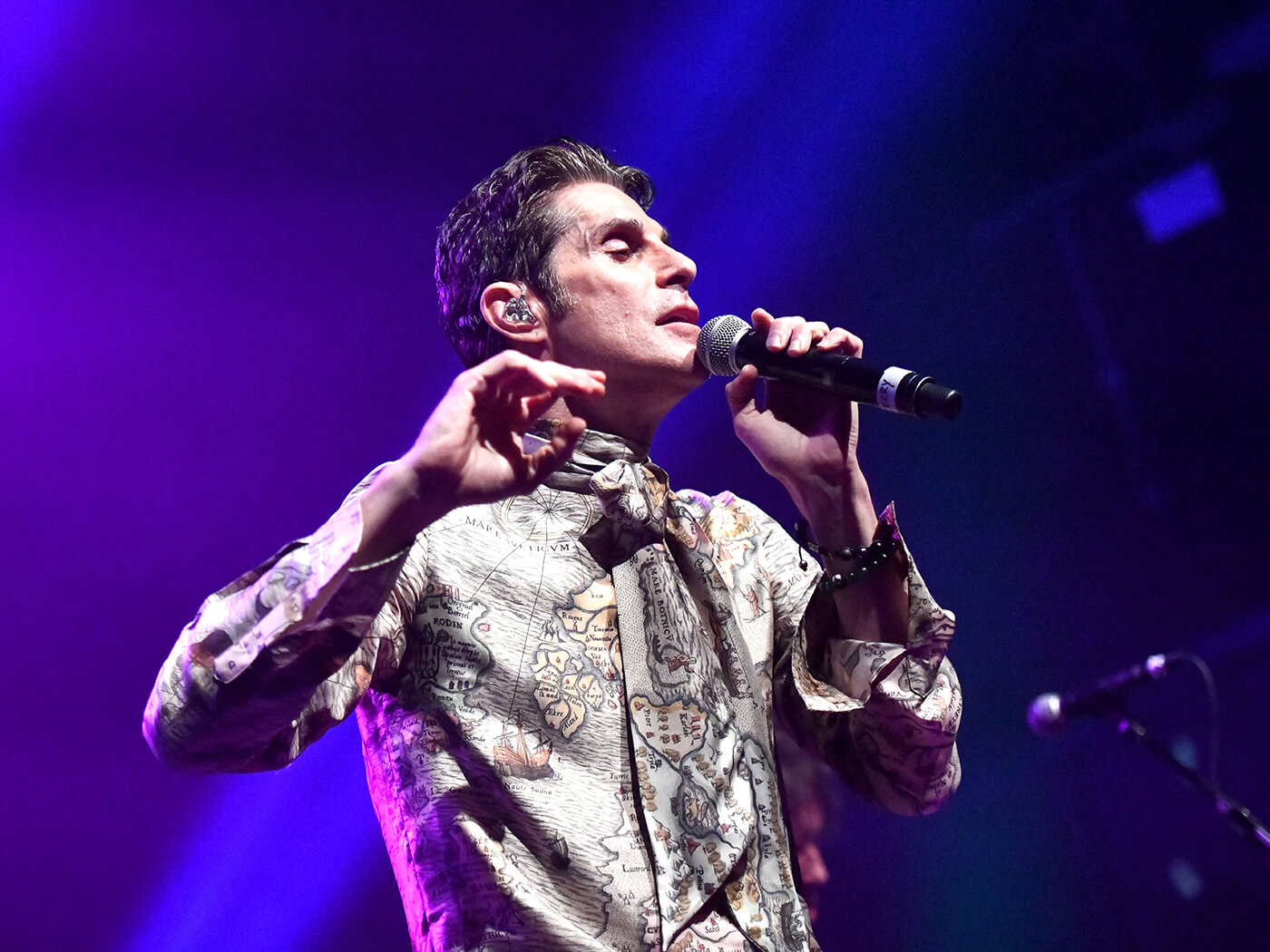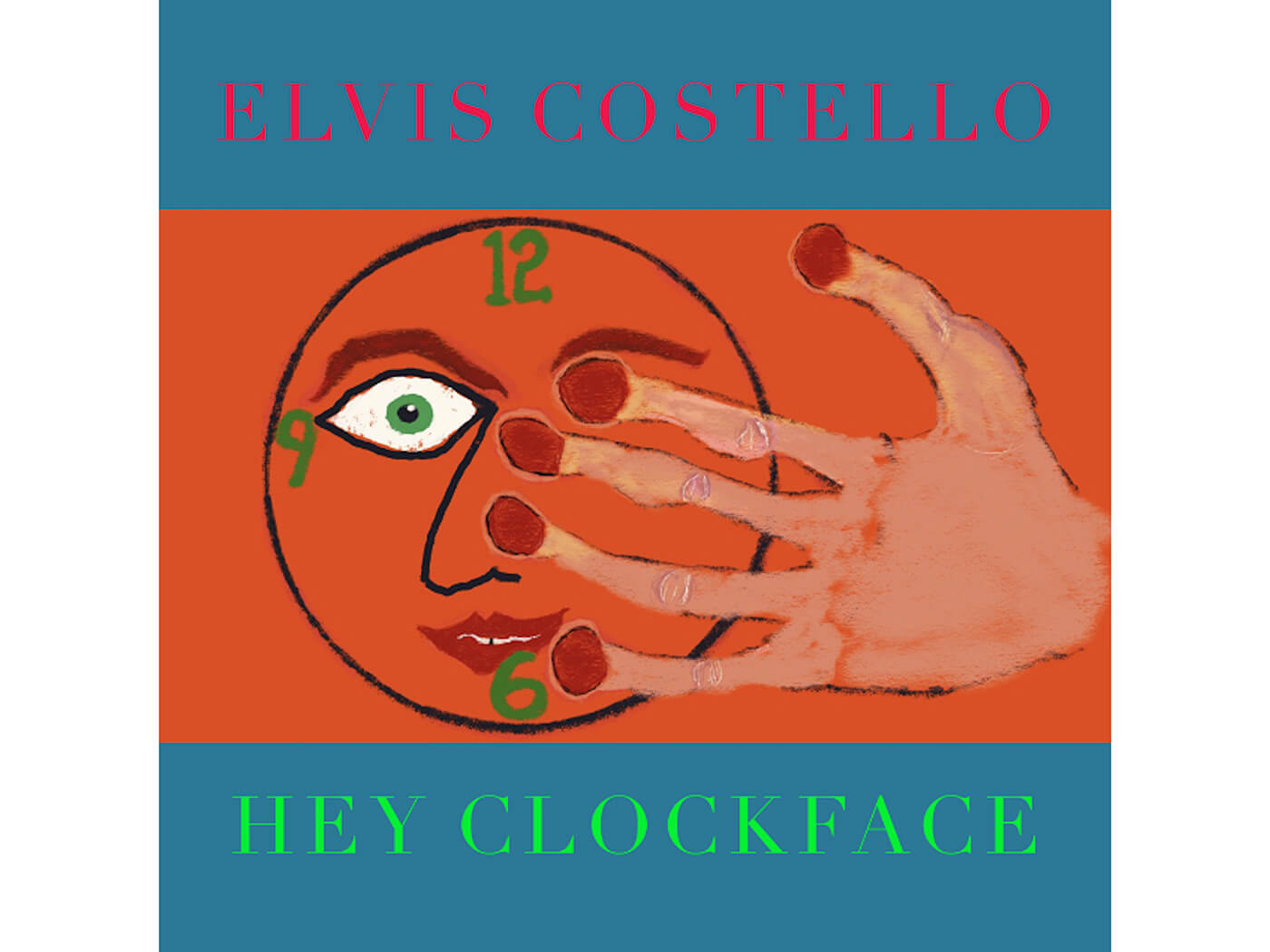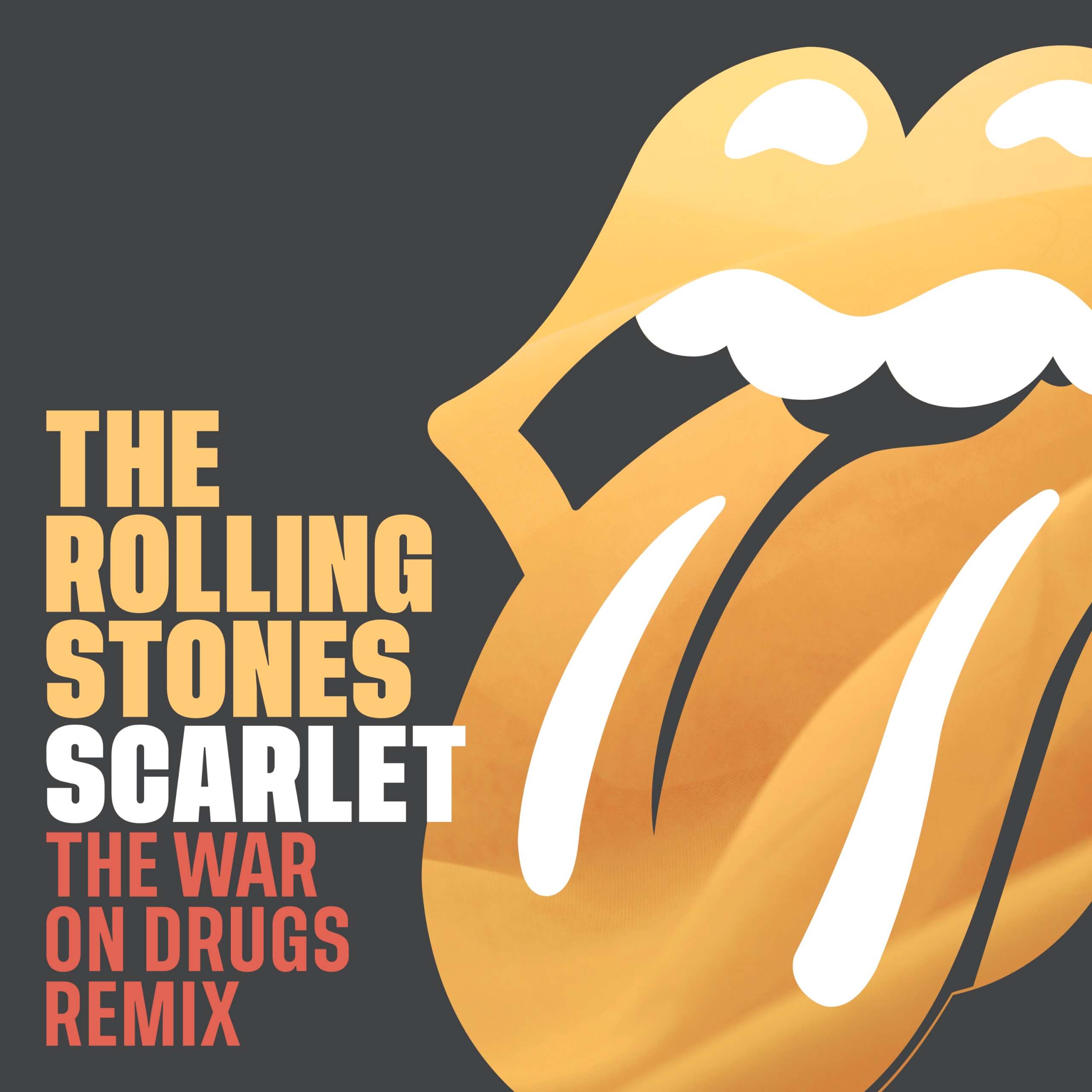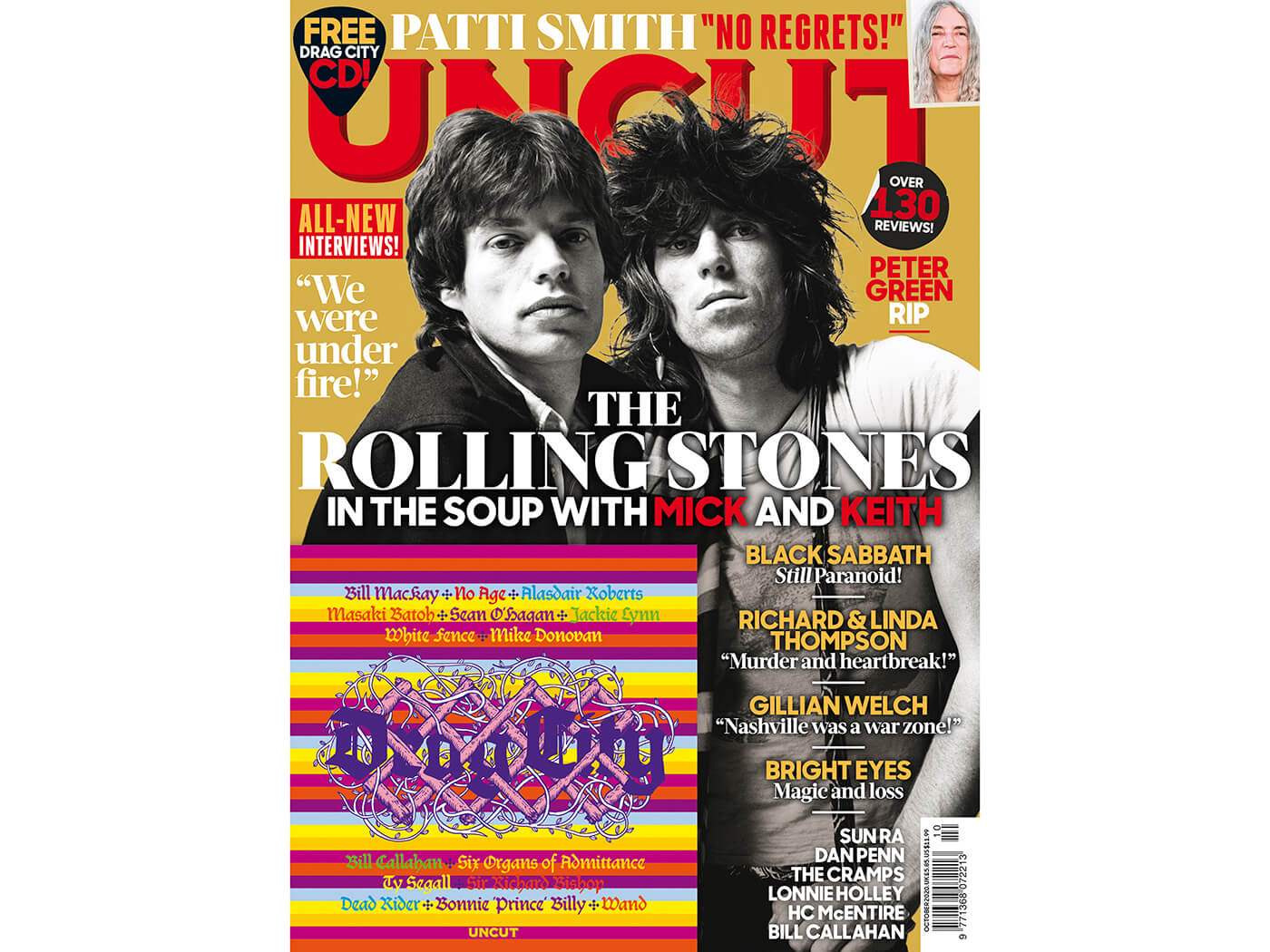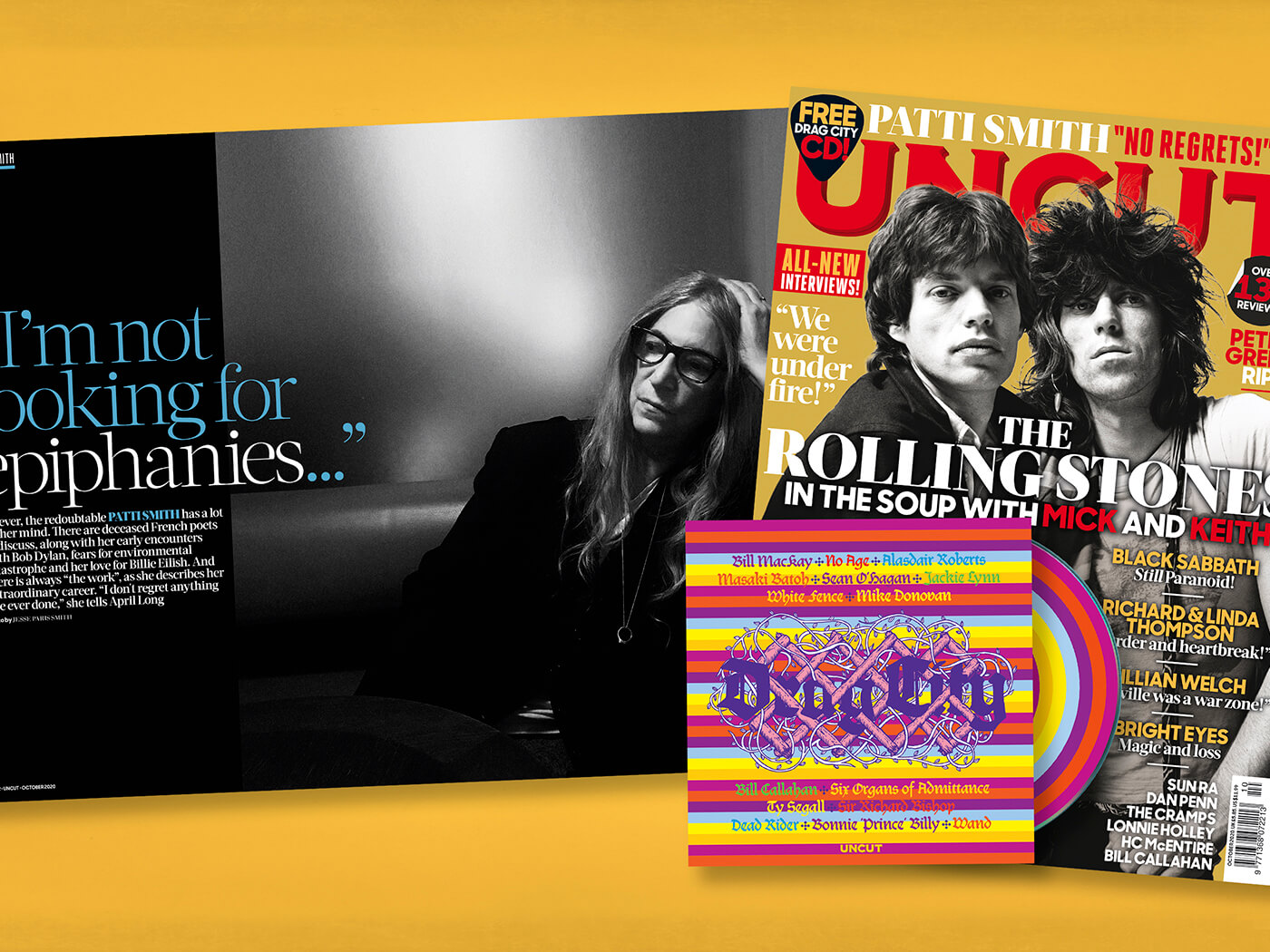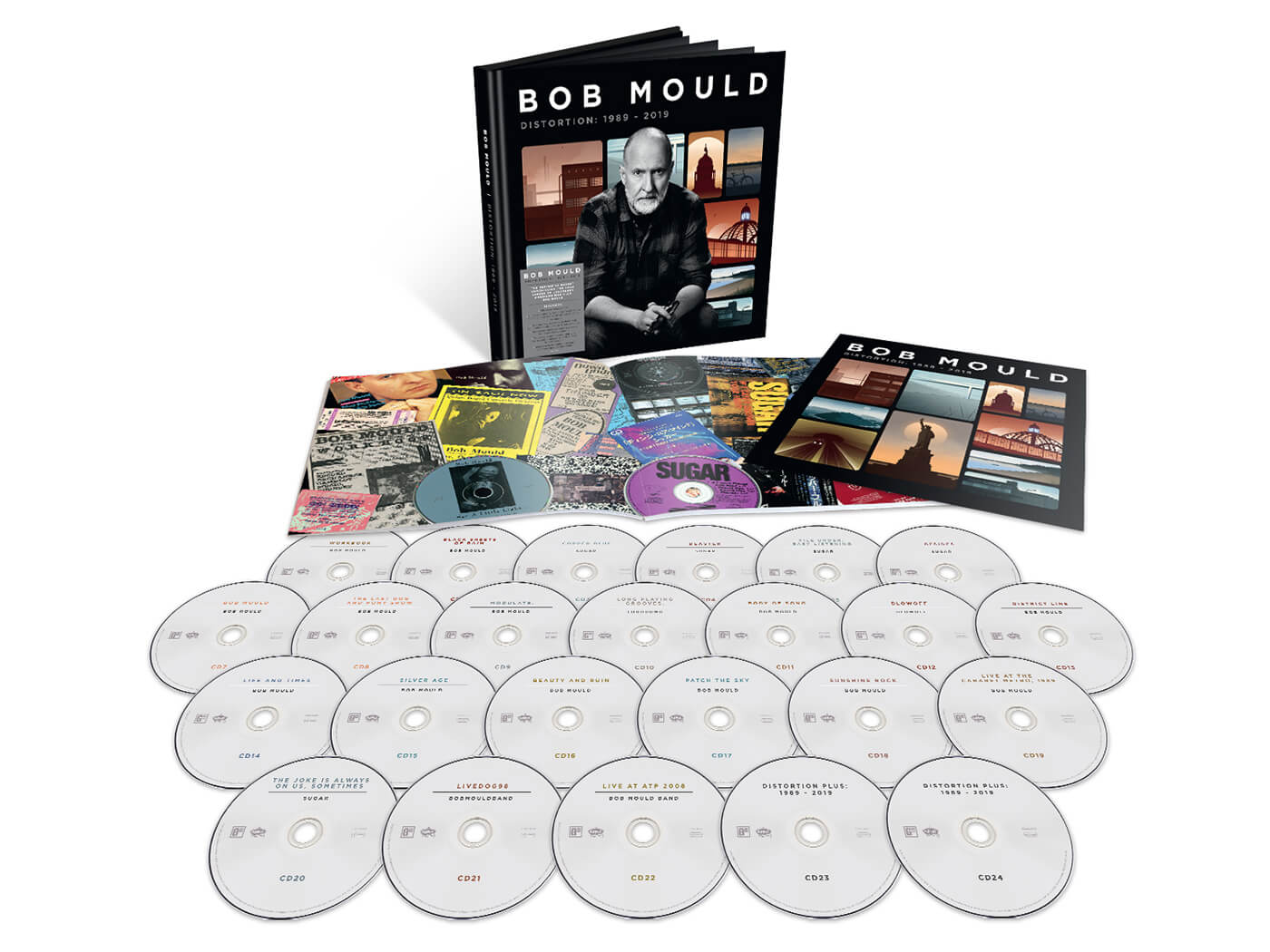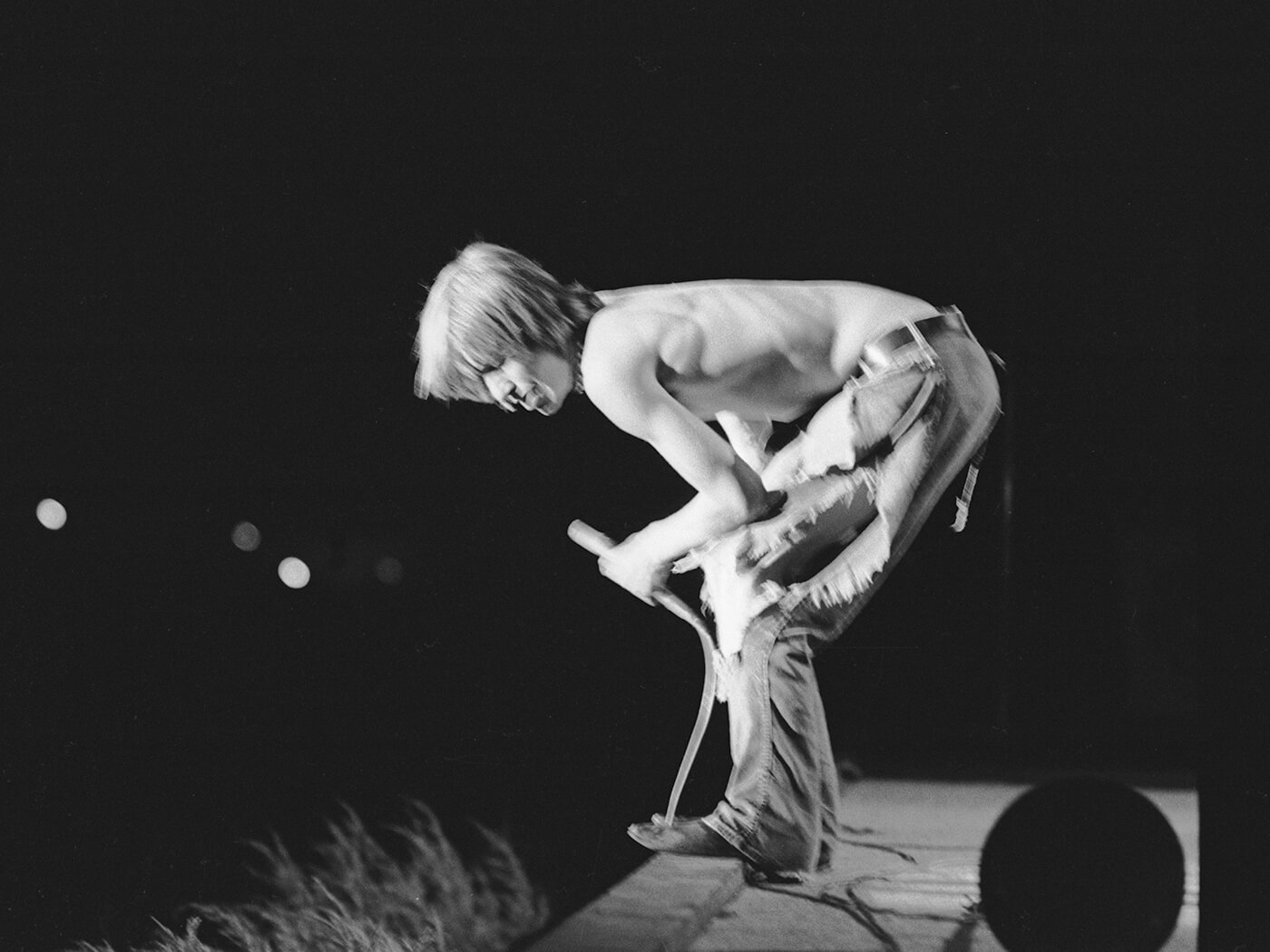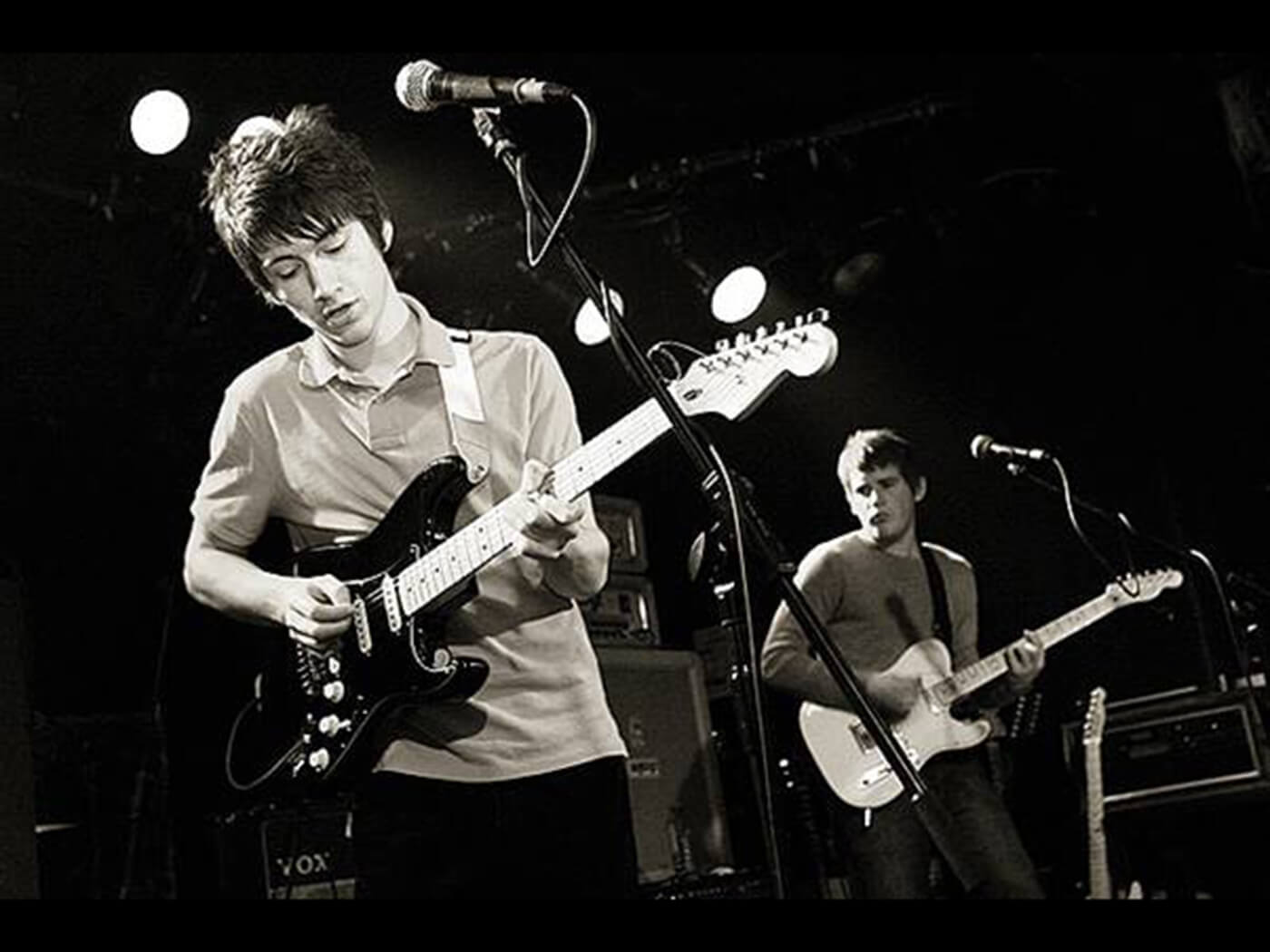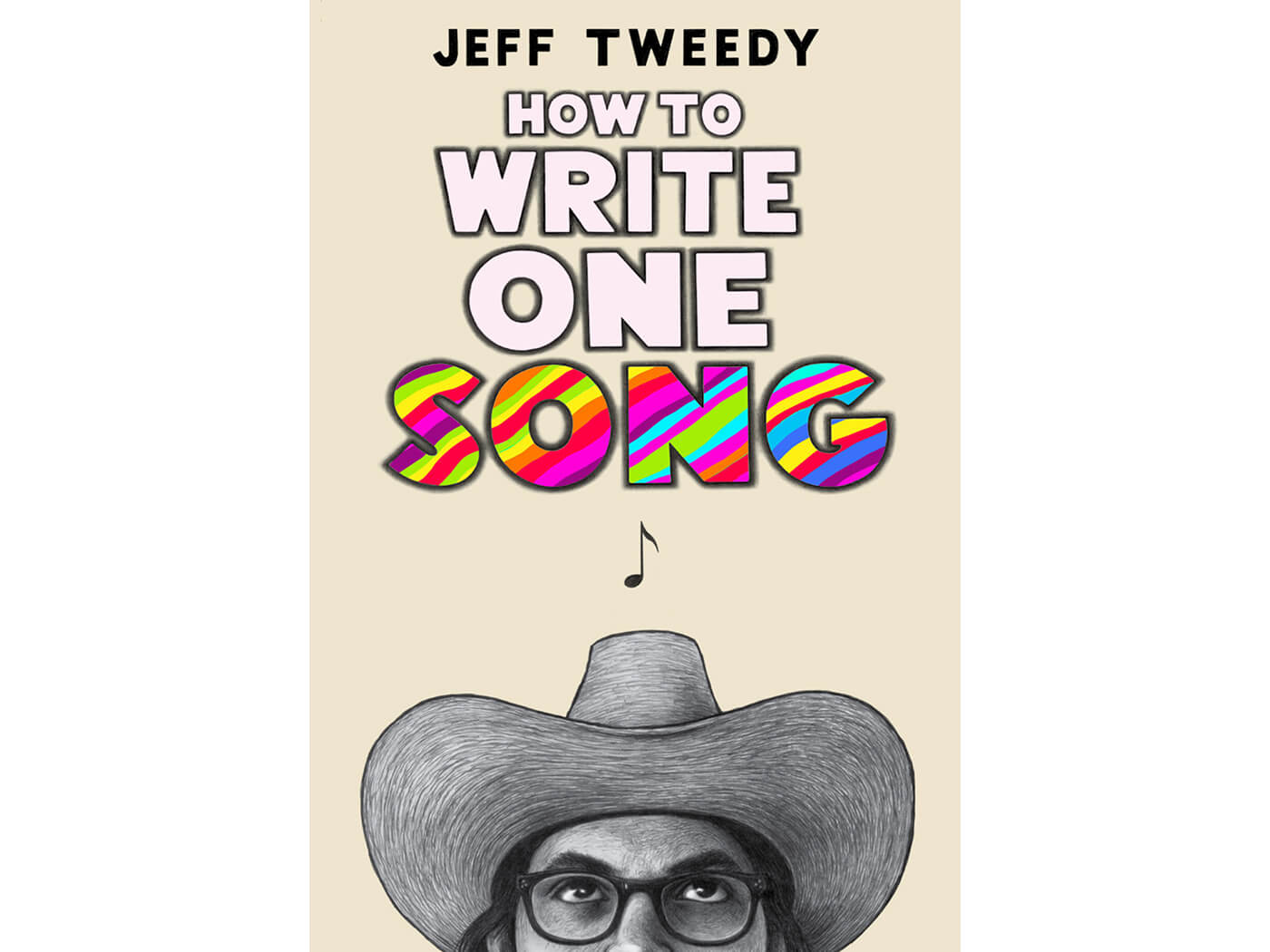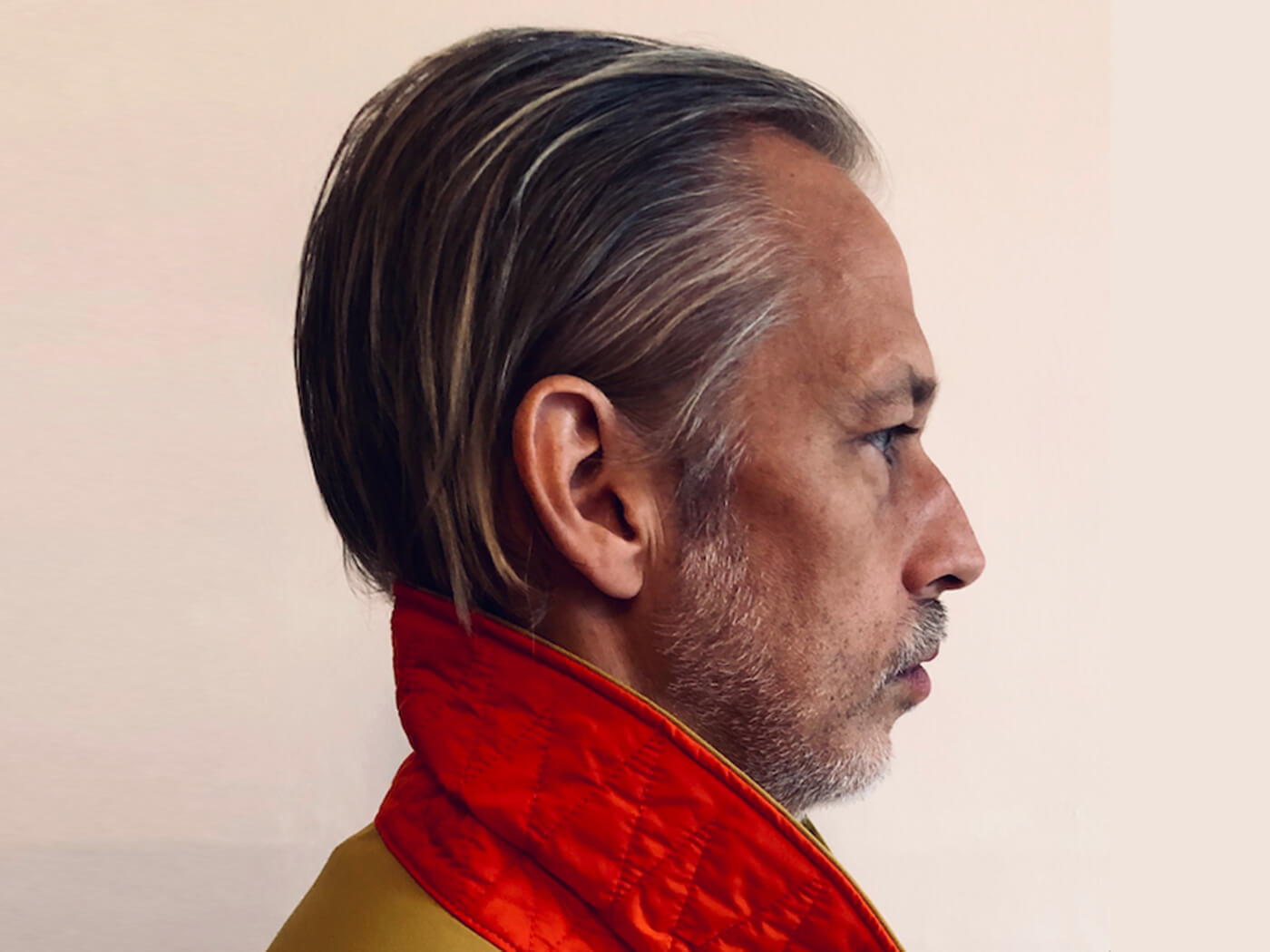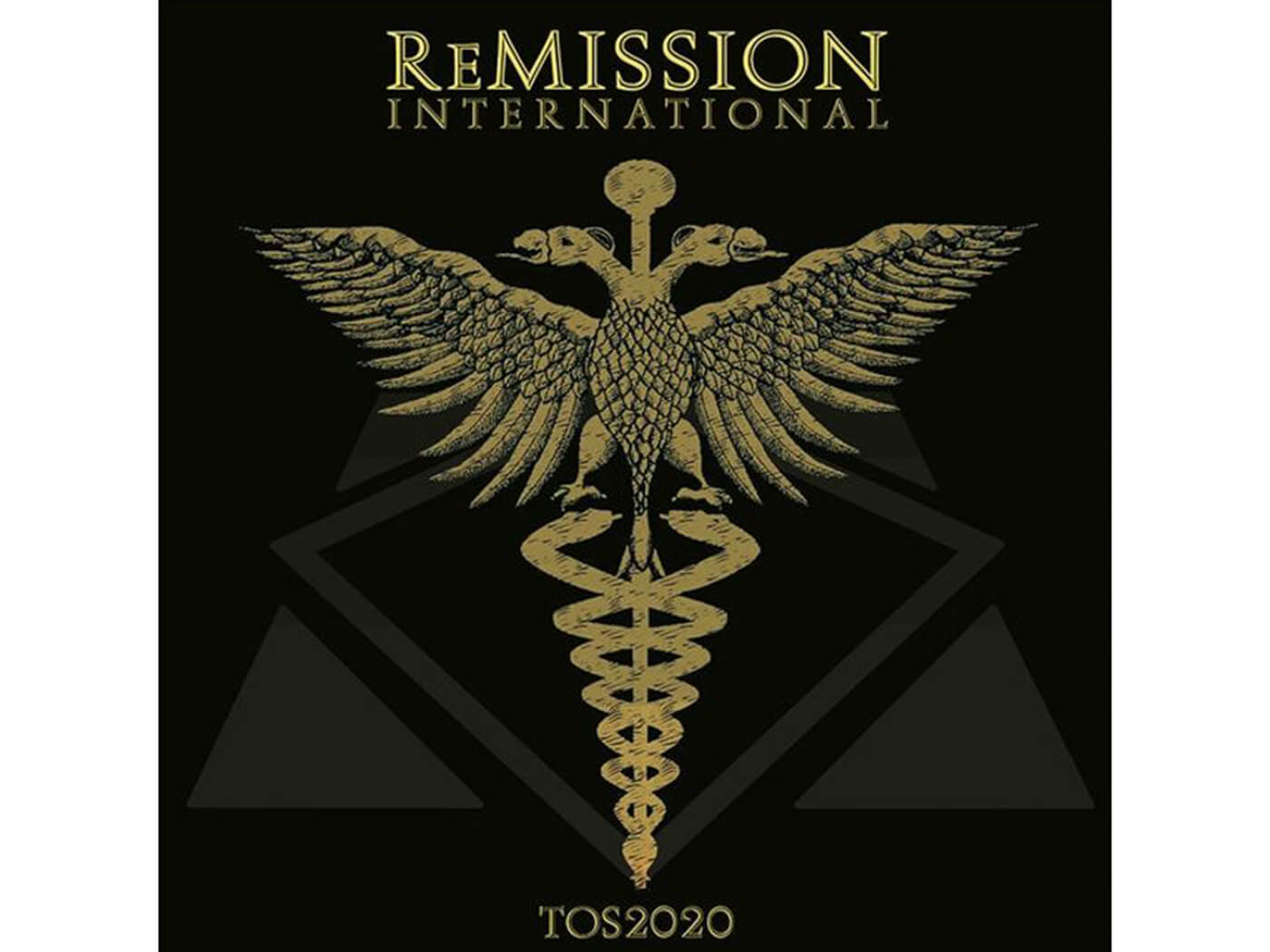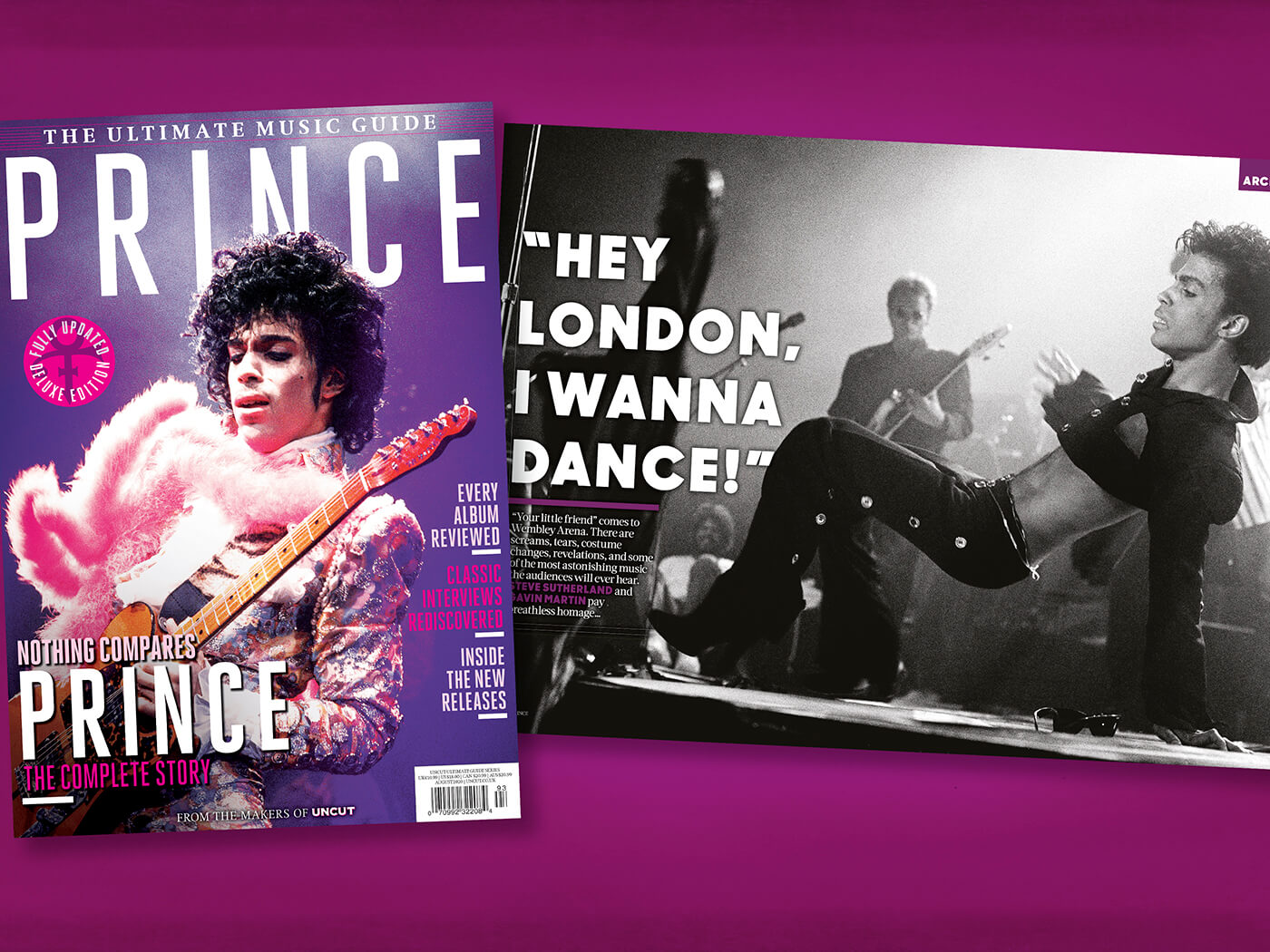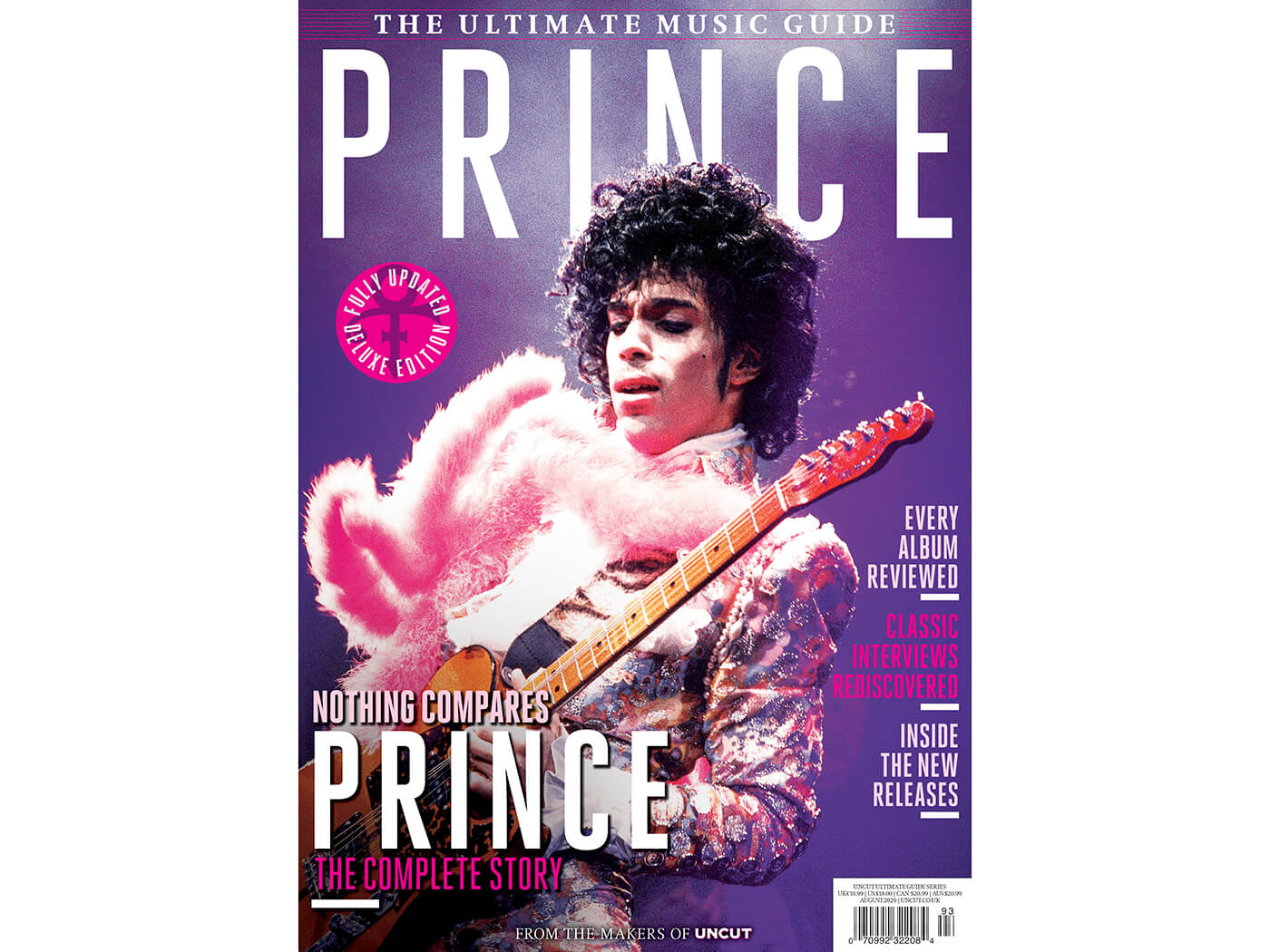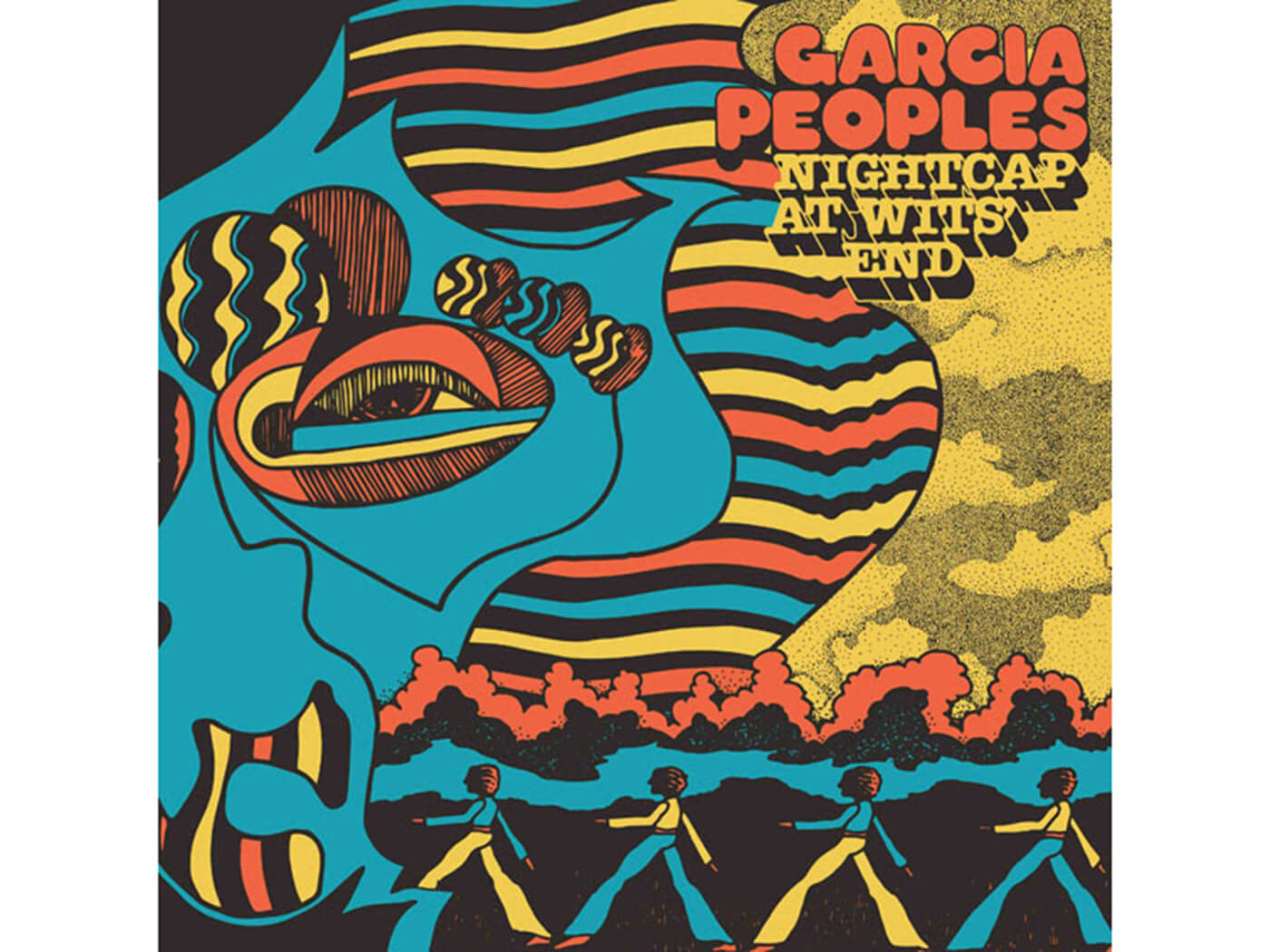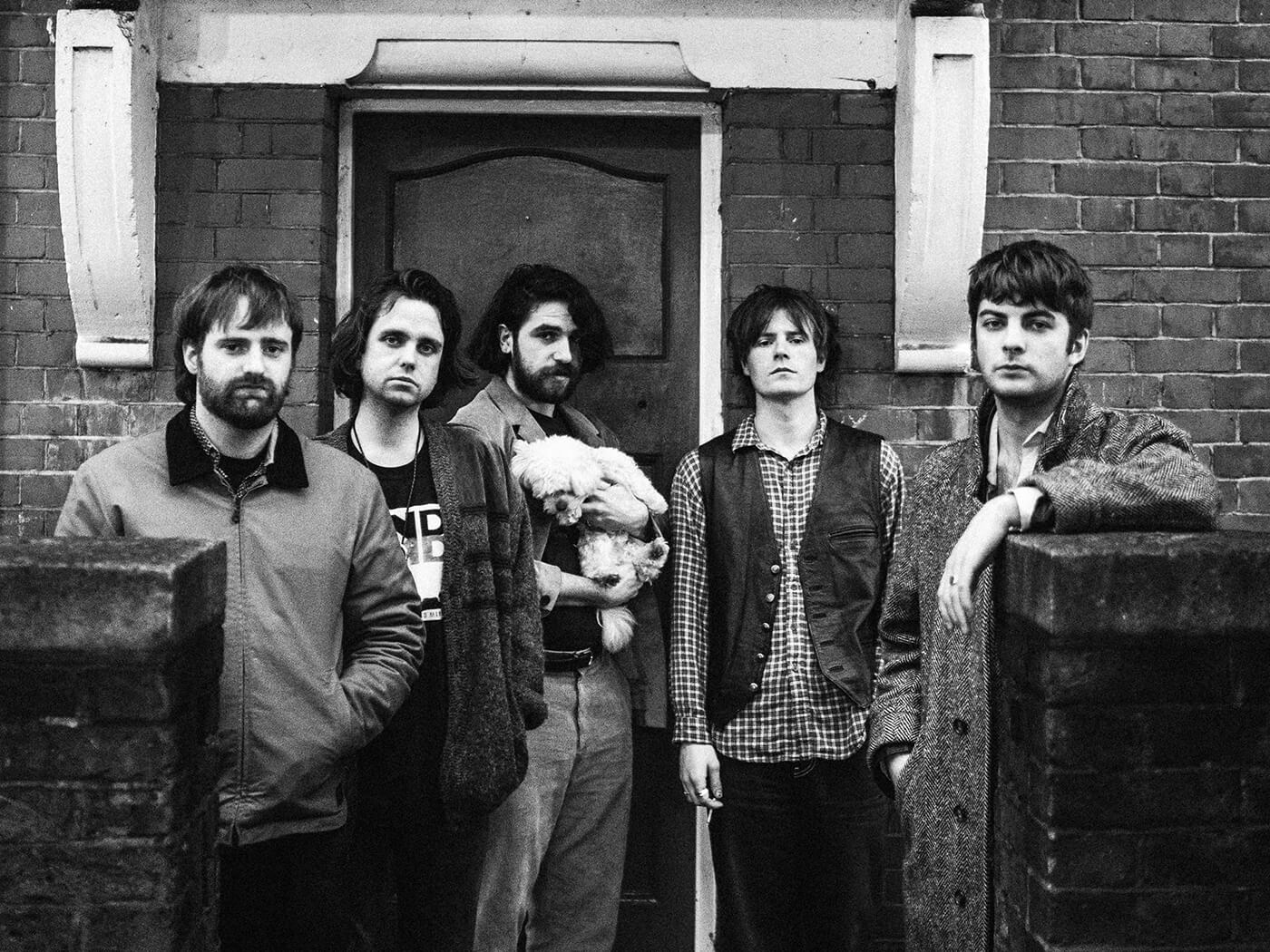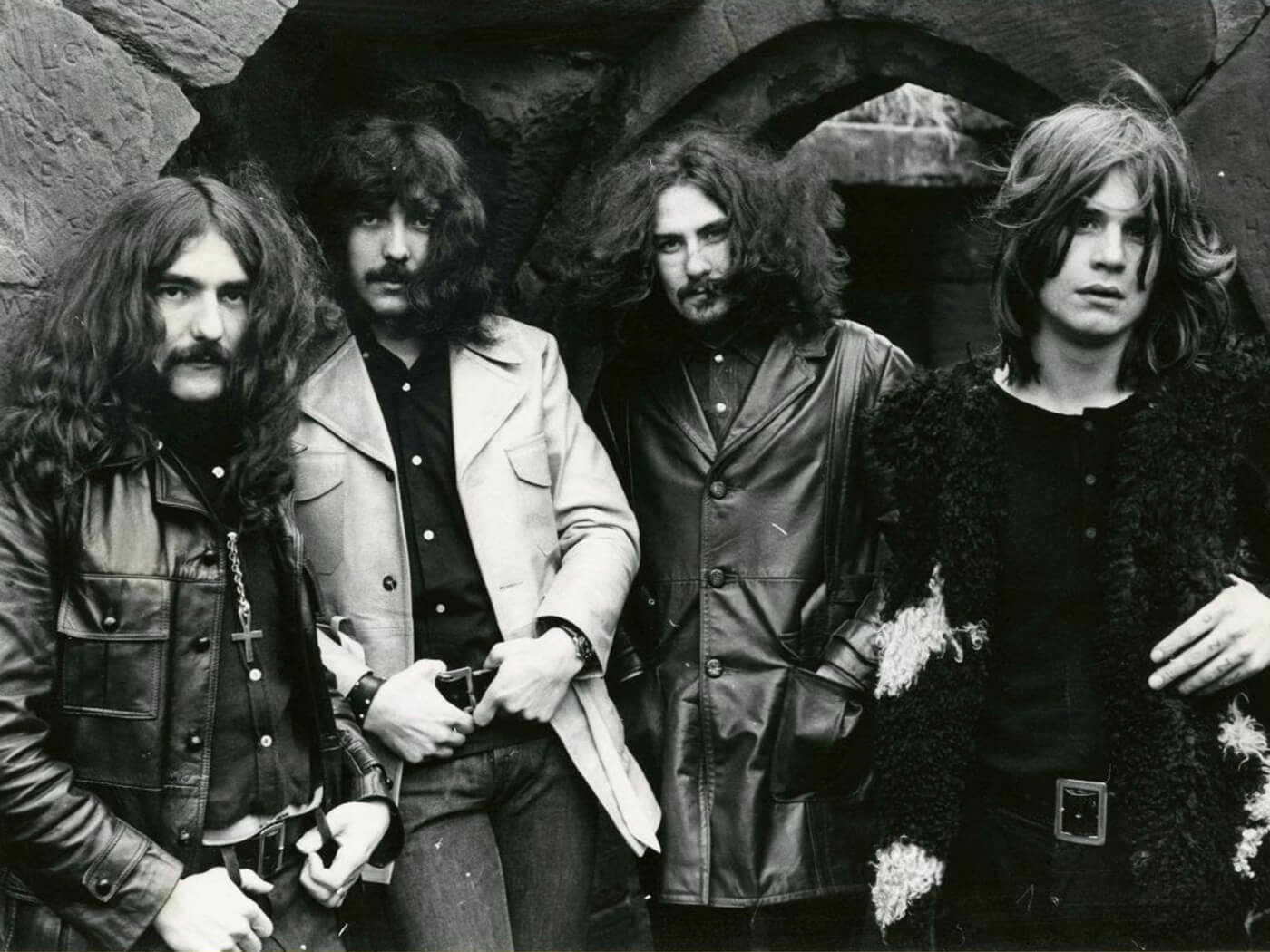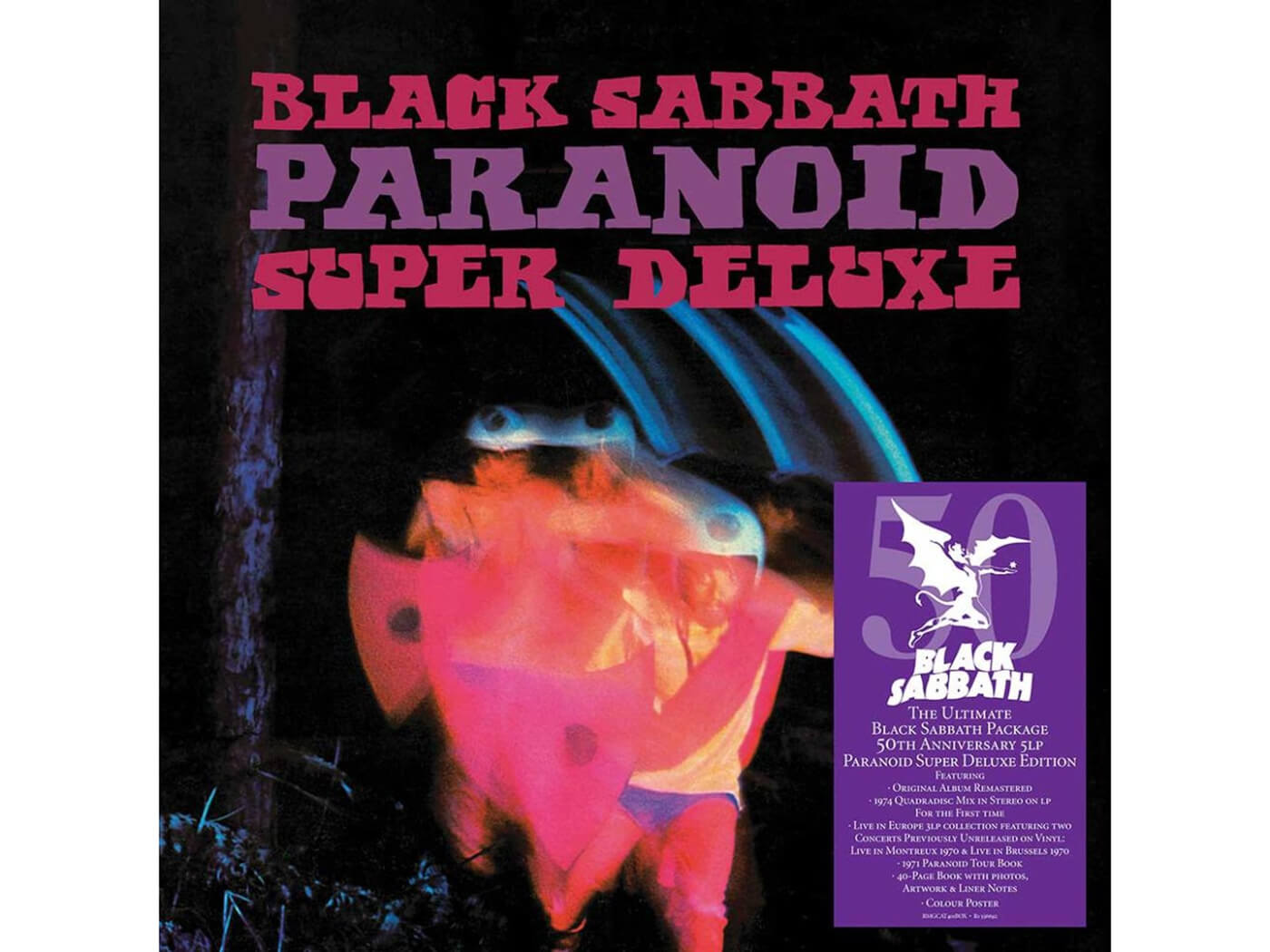Previously published in Uncut’s February 2020 issue
2019 was a breakthrough year for Fontaines DC, with their Mercury Prize-nominated debut earning effusive praise from the likes of Johnny Marr. Not bad going for a band whose earliest ambition was to be the “punk Beatles”. Dave Simpson joins Dublin’s boisterous, literary-minded quintet on a rainy night in Manchester, as they begin their largest tour to date. He discovers a band who, despite
struggling to come to terms with success, already have their second album in the bag. “If we hadn’t written new music, we probably would have broken up,” they reveal. Words: Dave Simpson
___________________________
Standing in the dressing room of Manchester’s O2 Ritz, singer Grian Chatten weighs up the distance travelled by his band, Fontaines DC, in recent months. It is a remarkable trajectory for the Dublin quintet, encompassing ferocious gigs, sold-out tours and a Mercury-nominated debut album, Dogrel, along with plaudits from many of their musical heroes. “I suppose,”
says Chatten with a half-smile, “we’ve been going forward… 50 yards every six months.”
He’s referring to the band’s jump from playing Whitworth Street’s 600-capacity Gorilla over the road in April to tonight’s venue, tripling their audience in doing so. Built in 1927, the Ritz has a proud history as
a key step up for rising stars. Frank Sinatra and The Beatles played here; the building hosted the first Smiths gig, supporting Blue Rondo A La Turk in 1982. By uncanny coincidence, Uncut meets Fontaines just as guitarist Conor Curley receives a “good luck” text message from Johnny Marr – who lent them a guitar at Glastonbury – and the band are thrilled to discover that Mike Joyce is in the audience for tonight’s gig.
On learning that Joyce rates his skills, Fontaines drummer Tom Coll modestly replies, “I’m really not
a very technical player.”
What does Chatten think of praise from the likes of Marr, then? Does he consider it a mark of success – or how else does he judge his band’s rise? “We’re not making tons of money,” he insists. “I’m told we’re inspiring kids to get into poetry, which is great, but I’m desperate to live in ignorance of our success. That’s at the core of my paradox, because I’m worried about becoming too aware of it and starting to care about the wrong things.”
It is a typically shrewd comment from Chatten – there will be further displays of such insight during the next 24 hours – that underscores the keen intelligence at work behind Fontaines DC’s rapid ascent. To an extent, they are kindred spirits with Idles, The Murder Capital and Shame – artists who are utilising the language and energy of punk as a response to current discord – but Fontaines DC have staked out other territory. Their music is fleetingly reminiscent of the monochrome post-punk of Joy Division or early Cure mixed with the kind of bracing, upstart qualities shared by The Libertines or The Strokes in their earliest days. They sing about Dublin
– particularly the impact of gentrification, working-class anger, the decline of community and small-town frustration – dispatching colloquial wisdom in lines like “Dublin in the rain is mine/A pregnant city with a Catholic mind”. Chatten cites The Pogues’ debut album Red Roses For Me as one of their chief influences alongside Yeats, Kerouac, Lorca and Joyce.
“They self-published two books of poetry before they made a record,” explains Undertones bassist Michael Bradley, who has watched the band’s popularity expand beyond Dublin. “It wasn’t just the singer who was doing poetry and then formed a band. It was all five of them! It’s as if James Joyce, Seamus Heaney and Brendan Behan all formed a band, or a vanload of Mark E Smiths.”
Backstage in Manchester before the gig takes place, the traditional trappings of rock’n’roll seem markedly absent. Band members and crew file in and out. Beside a modest selection of soft and alcoholic drinks, an uneaten chocolate cake sits temptingly on a table, presumably to be saved until after the show. While they wait to go on, bassist Conor Deegan cuts Chatten’s hair with scissors and a fork. “I’m not trained,” Deegan explains between snips. “We all cut each other’s hair.” Needs must, and the long-locked bassist makes an impressive surrogate barber, dusting clippings from the singer’s shoulders with a tissue and offering a jar of hair wax.
This is the first date on a new UK tour, their first large venue shows. Earlier, the band had spent the day meeting their new crew and running through a full production rehearsal with new lighting rigs, monitors and instruments. As Fontaines DC prepare to take the stage, it’s hard to tell whether nerves are running high; though as the band admit, there was every chance they might not
have made it this far. As it transpires, they struggled over the summer, finding it difficult
to come to terms with their success and manage their increasingly heavy schedule.
“Summer was hard for us,” confides guitarist Carlos O’Connell. “Imagine finding yourself in a place you’ve always dreamed of, but you just can’t find any enjoyment in any of it and you can’t understand why. Getting on a flight every morning and being in a different city and not seeing any of it; having a different crew we didn’t get on with. The gigs were always great. It was just everything around them.”
_______________________
The next day in Liverpool, aboard the band’s tour bus, Grian Chatten reflects on the previous night’s gig – a typically boisterous affair, with the audience singing along to every song. It was, he admits, life-affirming – “but there’s a sense of dread and doom on the album, and claustrophobia”, he explains. “It’s oppressive and cold, but humanity
rears its head in this whole black landscape. That’s the way I see the world now, and I suppose a lot of other people do.”
He notices, from the band’s travels, how British cities like Liverpool, Manchester and Leeds are experiencing similar upheavals to Dublin. “Any city that has suffered austerity or has an underdog aspect to the empire,” he says. “Northern audiences go particularly fucking mad at gigs, because they’re an outlet for frustration. People used to find that at football, but it’s become too expensive.”
He breaks off to look for a socket for the kettle. This is a new tour bus and clearly the layout has defeated Chatten. “As you can see,” he says with a laugh, “I’m really not used to all this.”
The bus is another barometer of the band’s progress after two years on the road in tiny vans. “It happened really naturally,” explains Deegan. “You’d walk around with a book sticking out of your jacket pocket and someone would say what’s that? I loaned Carlos some Yeats, I think.” Chatten compares this period to Dead Poet’s Society, where they were “drunk on the idea that poetry could change the world”. They published two small volumes of poetry together, Vroom and The Winding, before deciding to form a band.
Fontaines’ seriousness is familiar to one admirer. “There wasn’t much frivolity in The Smiths, because we wanted it to sound brilliant,” says Mike Joyce. “And these guys have that same passion.”
For Chatten, poetry equalled rebellion. Reacting against his formal music education, he became interested in the punk idea of “picking up a guitar and being self-righteously unable to play it”. He admits he may have been a “terrible singer, technically”, but they spent so much time together playing music that it became the next, natural step in their comradeship. O’Connell remembers the first time they assembled in a rehearsal room and “just jamming ideas for five hours, it was amazing”.
Their initial desire was to form a “punk Beatles”, though thankfully they have developed loftier ambitions since. The five members of Fontaines DC met at Dublin’s British and Irish Modern Music Institute,
where they bonded over poetry, not tunes. “At that first practice we said, ‘We want to be the best band in the world,’” Deegan chuckles. “I don’t know how far we got with that, but at least we weren’t defeating ourselves from the get-go.” Aside from The Pogues, their early inspirations included Dublin noiseniks Girl Band and the ’60s garage rock they heard in their local Garage bar. They all agree that an early, unreleased song called “The One Between” was the first track to sound recognisably like the Fontaines.
Because none of the members had grown up in Dublin, seeing the city as observant outsiders proved
a powerful trigger for songs. “There’s an area called Liberties which is being developed as a digital hub,” explains Deegan. “But you walk down the street and there’s horses. It makes you wonder what makes you love the place and what makes you fear for it.”
Chatten was born in Barrow-In-Furness,
Cumbria. Having an English mother made him feel faintly insecure about his identity. “I felt like I was a fake. Writing about Dublin brought me closer to my Irishness.”
As Michael Bradley notes, Chatten’s lyrics are forensic in their detail. The Anglo-phobic cabbie in “Boys In The Better Land” only smokes Carrolls – an Irish cigarettes brand, now only made in Dublin. “They’re products that don’t always get out of town, like a lot of people. So there’s a hopelessness to Carrolls.” Meanwhile, the “ready, steady violence” chorus on “Liberty Belle” was inspired by Chatten’s walk to work “and the cognitive dissonance of seeing something and being unable to accept it as reality. I’d be confronted by domestic violence, bloody noses, heroin addicts curled up in phone boxes, racism, and I’d cope by listening to my iPod.”
Only their absolutely best tunes made it past Fontaines’ ruthless quality control. They self-released their early singles – their 2017 debut, “Liberty Belle”, limited to 500 copies when they were plain Fontaines, now sells for £350 – before signing to Brooklyn indie Partisan Records. Dogrel producer Dan Carey saw them play to 150 people at the Five Bells pub in Deptford and knew even at that early stage in their existence he was watching “the finished article”. To transfer that energy and intensity onto record, Carey recorded the band live in the studio, playing four songs at a time like a mini-gig. “We had this pact that if anything went wrong in a song, we’d wipe the tape and start again,” says Carey. “The pressure in that situation was unbelievable, but it worked.”
Carey’s other plan was to record the vocals separately from the music. “An a capella recording
of Grian singing the lyrics would be a perfectly satisfactory recording,” he argues. “So I mixed the music instrumentally and put the vocal on top afterwards. I wanted it to sound like a gig, but so people could hear every word.”
Band and producer were so thrilled with the results that they had a party in the studio, playing the album all night; evidently it paid off, but to an extent that no-one could have foreseen. The band admit now to being “gobsmacked” when the album went into the Top 10 and and was subsequently nominated for a Mercury Music Prize.
Looking back on this period now – the sudden rise, overwhelming success and punishing schedule – Grian Chatten admits it almost broke the band.
“I think every artist simultaneously feels deserving of success and a complete fraud,” he explains, sitting in the tour bus close to a small fan heater that hums gently in the background. “That feeling was there already, but the success means it feels like your fraudulence is growing.”
Where does that come from? Insecurity?
“Yes,” he nods, “If I really felt that I deserved this, then I wouldn’t have it.”
He admits he struggled with acclaim and attention. “I mean, it’s touching, but difficult to reconcile. To be described as a ‘poet’… My favourite poets, like Yeats, are untouchable, out of reach. I can’t possibly imagine myself being like that.”
However overwhelmed the band were by the sudden and acute acclaim, this was only amplified by their increased schedule. “Drive from the gig, get to the hotel at 4am, woken up at eight,” recounts Chatten. “Get in the van; you have to do things on the journey and you want to tell the interviewer, ‘Fuck off, I’ve had four hours’ sleep.’” He smiles. “We’re sensitive people and we become more sensitive when we’re sleep-deprived.”
“It’s hardest on the guys who have girlfriends back home,” considers Deegan. “I can suspend my life and go on tour. But for them, it continues without them being there.”
When O’Connell finally went home to be with his girlfriend, he found himself having an unexpected anxiety attack while out buying a sofa. “It was insane,” he says with disbelief. “The most normal things become absolutely terrifying.”
Some bands may turn to drink and drugs, but Chatten says Fontaines aren’t a big party band and that “our manager says we’re mad enough already. But the itineraries are made for robots. I’d encourage any artist to put their foot down, because it can end up feeling the opposite of what you go into it for.”
_________________
During summer 2019, Fontaines suddenly cancelled a slew of festival dates in the UK, Switzerland and America, citing “health issues”. Chatten now acknowledges this was burnout.
“I’m not complaining,” he insists. “I got what I wanted, but at some point we’ll take time out. I want to be treated as a normal person. I really want to get
a job, put on a uniform and be faceless from nine to five. I miss the staff in the bookshop I used to work in, when it was easy to compartmentalise who I am privately and publicly. I no longer have that.”
For some bands stepping off the promotional treadmill, time off would be taken literally. Not so Fontaines DC Back home in Dublin, they used their R&R time as an opportunity to regroup and consider their next steps.
“I suppose most bands would have just gone to sleep,” Chatten says. “But we knew we needed to be doing the thing that makes us happy, and that’s writing music. That just changed everything. If we hadn’t written new music, we probably would have broken up. But we went on the [autumn] American tour knowing that we’d written another album, and the tour was just fantastic.”
They had a head start, though – as Chatten explains, the band spent their time profitably “recording four-part harmonies on our phones” as their van travelled the motorways and freeways of Europe and America. “When we touched down in Dublin, the songs just tumbled out.”
Chatten is quick to make the point that this second album won’t repeat Dogrel. It has, he explains, been influenced by the Beach Boys – Chatten’s favourite band – and what Deegen calls “American cowboy music”, encountered touring the States with Idles. Perhaps the biggest revelation of all is that they’ve stopped singing about Dublin. “Because our Dublin in our heads is pretty much the way we left it,” Chatten explains, “but I haven’t written about hotel rooms. The album’s introspective, full of characters from my dreams. They’re parts of me – roads that I could have gone down – and they carry guilt and shame.
“It’s a subconscious attempt on my part to empathise with people, because the paradox of doing this is that I sometimes feel so lonely.” He brightens, and there’s a grin. “But we’re alright! The band are as close as ever and we’re encouraging each other to open up.”
It’s soundcheck time and fans are milling round the bus. The gigs continue to get bigger: they’re playing the 5,000-capacity Brixton Academy in February. So how far can Fontaines go?
“Personally, I’d like us to last for another 20 years,” smiles O’Connell, stepping off the bus
for a smoke. “There’s nothing that’s given me
o much joy as being in a room with the lads, creating music together.”
“They could all go home, because they’d leave behind this brilliant record,” says Michael Bradley, who was around Chatten’s age when The Undertones’ bubble burst. “But I’d be surprised if the new songs weren’t just as good.”
Chatten says he “can’t even think about” arenas, and adds, with a note of caution, that “skipping around the rehearsal room happy with what you’ve created is pure enjoyment. But I promise if that feeling ever stops or we run out of ideas, we’ll go away. I’ll just get a job and quit.”
Then Chatten and his bandmates walk inside Liverpool’s O2 Academy, the shouts from eager fans filling the evening air around them.
___________________
Fontaines’ literary heroes
JAMES JOYCE
Carlos O’Connell: “Dubliners was a big book for us. There’s all these Dublin characters and different stories from these different perspectives and they all ring true – innocence, lies, lost ambition. We shared those ideas.”
ALLEN GINSBERG
CO: “We read lots of Jack Kerouac about self-acceptance, but Ginsberg was definitely the Beat writer we liked the most. Howl is about outcasts in America and is
just amazing.”
FEDERICO GARCIA LORCA
CO: “His book Poet In New York influenced the Beat Generation [and Leonard Cohen]. It’s the shock of someone from rural Spain living in New York. When artists fled fascism in Spain, he remained because he felt the people needed ideas. He was killed.”
WB YEATS
CO: “After reading
the Beats we found Yeats, and it was a whole new level, almost a different language. So much
is said with a few words. We became obsessed with
that and read Yeats so that we could get better at it ourselves.”
OSCAR WILDE
Grian Chatten:
“I adore Wilde’s writing for the way
e can get such big ideas into a single sentence. Our song “Chequeless Reckless” is a list of Wildeisms – or my hopeless attempts at Wildeisms.”


